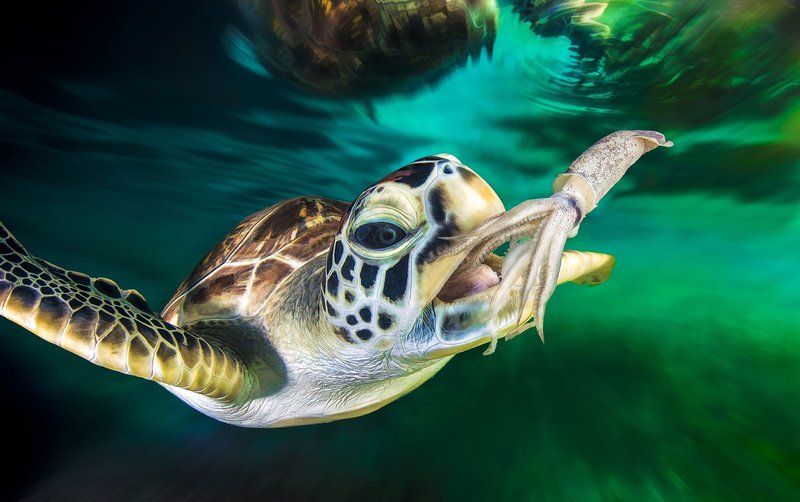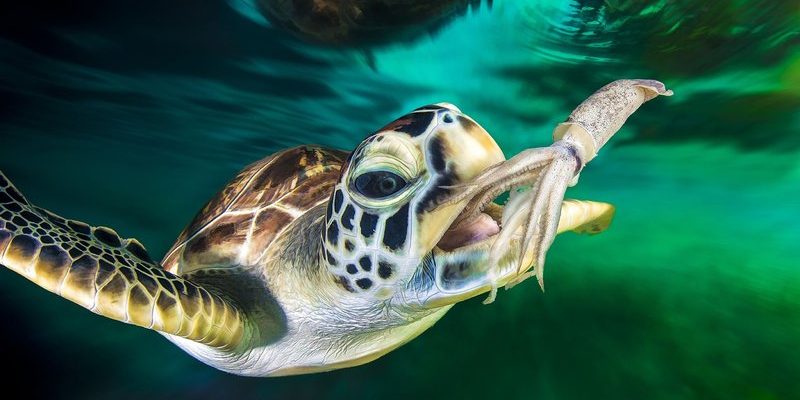
Sea turtles are fascinating animals, but they’re also quite different from other creatures. They have specific dietary needs based on their species, age, and the environments they inhabit. Understanding what they eat isn’t just about curiosity; it’s key to their conservation. After all, if we know how they feed, we can better protect their habitats and ensure these ancient mariners continue to swim our oceans for generations to come.
Types of Sea Turtles and Their Diets
Sea turtles belong to several species, each with its own distinct diet. Generally, we can categorize them into two main groups: herbivores and carnivores.
- Herbivorous Sea Turtles: These turtles primarily feast on aquatic plants. For example, the green sea turtle is famous for munching on seagrass and algae. They play a critical role in maintaining the health of seagrass beds, which provide habitat for many marine organisms.
- Carnivorous Sea Turtles: In contrast, species like the leatherback sea turtle are more focused on a meat-based diet, mainly consuming jellyfish. Their bodies are specially adapted to handle the stinging tentacles of jellyfish, which helps keep their ecosystems balanced.
Here’s the thing: their diets are not just about filling their bellies. Each sea turtle species has evolved to consume specific types of food that suit their anatomical features and habitats. By understanding these dietary habits, we can help protect them better.
Feeding Habits: How Sea Turtles Eat
When it comes to feeding, sea turtles are a mix of slow grazers and opportunistic hunters. They tend to be quite methodical. For example, green sea turtles often graze on seagrass meadows, using their strong jaws to slice the grass just below the surface.
Did you know that sea turtles can move surprisingly fast when they need to? While they may look like they’re taking their time, they can speed up to chase a jellyfish or evade a predator. This adaptability is what helps them thrive in various ocean environments.
Moreover, sea turtles use their sense of smell to find food. They can detect scents in the water from quite a distance, guiding them toward their next meal. Honestly, it’s like having a built-in radar system that helps them navigate the vast ocean for food.
The Role of Diet in Sea Turtle Health
The diet of a sea turtle is crucial not only for its own health but also for the entire marine ecosystem. A well-rounded diet helps maintain their immune system, supports reproduction, and enhances their overall longevity.
For example, a lack of proper nutrition can lead to deficiency diseases. If a loggerhead turtle, which primarily eats crustaceans, can’t find its favorite food, it might struggle to maintain its health. This is why it’s essential to keep ocean habitats healthy and reduce pollution.
Plus, healthy sea turtles contribute to the environment. By eating seagrass, they help control its growth, which encourages a thriving underwater ecosystem. You might say they’re nature’s gardeners, ensuring a balanced marine environment.
Impact of Human Activity on Sea Turtle Diet
Unfortunately, human activity poses a significant threat to sea turtles and their diets. Overfishing, pollution, and climate change are just a few issues that impact the availability of food in the ocean.
For instance, plastic pollution can confuse sea turtles into thinking plastic bags are jellyfish, leading to ingestion that can be lethal. Additionally, habitat destruction, like the loss of seagrass beds, prevents herbivorous turtles from accessing their primary food source.
It’s a tough situation. When their diet is disrupted, it can lead to a ripple effect in marine ecosystems, affecting species on both ends of the food chain. Awareness and conservation efforts are key to protecting these majestic creatures and their diets.
How Sea Turtles Find Food
Finding food in the vast ocean isn’t as easy as it sounds. Sea turtles must rely on a few strategies. As mentioned earlier, they use their sense of smell to detect food over long distances. But they also rely on visual cues.
For instance, green sea turtles might spot a lush patch of seagrass while swimming near the surface. They’ll dive down, using their powerful flippers to propel themselves toward the meal. This active search for food is essential for their survival, especially in areas where food sources can be sparse.
In some cases, sea turtles have been observed following currents that lead to more bountiful feeding grounds. It’s almost like they’re on a treasure hunt, using their instincts and learned behaviors to locate the freshest meals.
Conservation and the Future of Sea Turtle Diets
As we continue to learn about sea turtles and their dietary needs, conservation efforts are becoming increasingly important. Protecting their habitats means ensuring they have access to the food they need to survive. This includes advocating for cleaner oceans, sustainable fishing practices, and protecting critical feeding grounds like seagrass meadows.
Volunteer programs, awareness campaigns, and supporting legislation that safeguards marine environments can make a big difference. Each small action we take can help reduce the threats they face from pollution and habitat loss.
Here’s the thing: by prioritizing the health of our oceans, we’re not just helping sea turtles; we’re preserving entire ecosystems. The more we advocate for the health of marine life, the more we enrich our own world.
Understanding the diet and feeding habits of sea turtles is vital for appreciating their role in the ocean and ensuring their survival. As we’ve explored, their feeding habits are complex, deeply intertwined with their ecosystems, and significantly impacted by human actions.
If we want sea turtles to continue their graceful swim through our oceans, we need to prioritize their health. This means supporting conservation efforts, reducing plastic use, and being mindful of our impact on the marine environment.
Let’s make a collective commitment to protecting these ancient mariners. After all, in caring for our oceans, we’re also caring for ourselves and generations to come.

